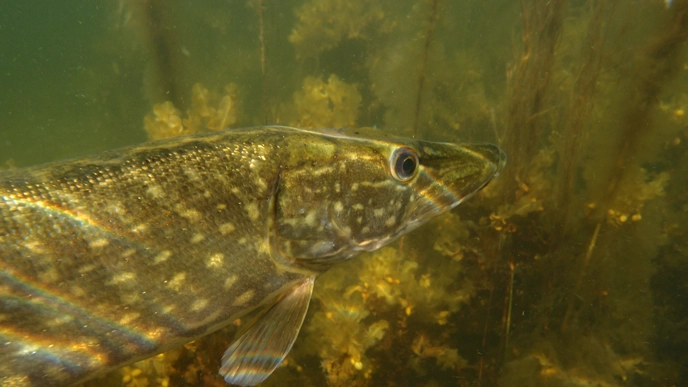
ePIKE - Monitoring of pike with eDNA
KEY POINTS- Development of eDNA as a monitoring method for pike
- Multi-step methodology from laboratory to field
- Improved management of pike populations
Project overview
Participants
Additional info
More related research
Short summary
In the research project ePIKE, we develop and evaluate eDNA as a non-invasive method for pike monitoring. The project consists of laboratory trials, mesocosm experiments and sampling of natural habitats.
We need a better understanding of northern pike ecology. This requires robust and cost efficient monitoring methods so that managers can make informed decisions on resource use and conservation.
In the research project ePIKE we investigate if eDNA can be efficiently used as a non-invasive monitoring method for Swedish pike stocks. eDNA is a relatively new methodology and in a first step we will compare and test existing techniques. This will be followed by small scale experiments in aquaria under controlled environmental conditions and in semi-natural tanks and ponds. Field campaigns investigating the relationship between eDNA and pike biomass under natural conditions are also included.
We hope that the project will contribute to better, less invasive and more cost efficient estimates of pike stocks in both coastal and freshwater environments.
Improved monitoring methods as a means to aid management
The development of eDNA-methods for the monitoring of fish is particularly important for species that lack standardized monitoring methods. Pike is one of the most important recreational fish species in Sweden. Being a predator, the pike plays a vital role in aquatic food-webs. Despite it’s socioeconomical and ecological importance, the pike has been neglected in biological monitoring, partly because pike seldom are caught by standard monitoring methods. As a consequence, there is no adequate data to guide authorities in appropriate management strategies for this species. To better understand the ecology of the pike and to be able to make informed decision there is a need for new monitoring methods.
Our research
Publications
Temperature moderates eDNA–biomass relationships in northern pike